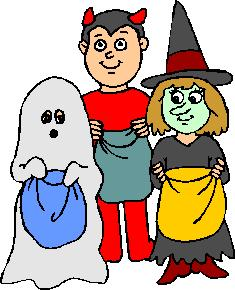Growing up, many people think of Halloween as a time for costumes and candy. Birthdays provide a reason to have cake and receive presents. Thanksgiving is a chance to see family and watch football. But research suggests that college students view holidays in a more limited way: as opportunities to engage in heavy drinking. This week’s Addiction and the Humanities examines college students’ celebratory drinking habits.
Previous studies of the American general population found that certain holidays (e.g., Christmas, New Year’s Eve) correlate with greater alcohol consumption (Poikolainen, Leppanen, & Vuori, 2002; Weir, 2003). Considering the large body of research describing college students’ excessive alcohol use, it seems reasonable to ask whether this association extends to additional holidays on college campuses. However, few studies have scrutinized students’ drinking behavior during holiday festivities.
When surveyed, college students report “special events” as one of the principal reasons for drinking (Klein, 1992), and “fun and celebration” as the essential motive for playing drinking games (Johnson, Hamilton, & Sheets, 1999). These studies also found that those who endorsed the “fun and celebration” rationale drank greater quantities of alcohol and viewed drinking as a way to have fun. These attitudes might contribute to binge drinking and other serious abuses of alcohol.
To measure the alcoholiday effect (i.e., holidays and celebrations that center on alcohol) without relying on self-reported consumption, which might bias the results, Glindemann, Wiegand, and Geller (2007) performed three similar studies comparing students’ blood alcohol concentrations (BACs) during holiday celebrations and ordinary weeknights. In the first study, for five consecutive Thursdays, the fourth Thursday being Halloween 2002, research assistants in different sections of downtown Blacksburg, Virginia, executed brief surveys. Using handheld breathalyzers, they measured pedestrians’ BACs, 87.8% of whom were students. Research assistants followed the same procedures around St. Patrick’s Day in 2003 (Study 2) and 2005 (Study 3), during which 84.5% and 92.7% of pedestrians were students.
Study 1 revealed a statistically significant main effect for costume; participants wearing costumes had an average BAC of .089, compared to those in everyday clothes who had a mean BAC of .058. Furthermore, Chi-square comparisons indicated that the number of participants with a BAC of .08 (i.e., threshold of intoxication) or greater was significantly higher for those in costume (i.e., 60.3% vs. 35.7%). Data from Studies 2 and 3 revealed that BACs were significantly higher for participants reporting a celebration motive (.096) as opposed to those not reporting the motive (.074). Analyses from all three studies revealed a main effect of holiday: participants’ BACs were significantly higher during celebratory occasions than the non-celebrating occasions.
Glindemann, Wiegand and Geller’s (2007) findings are similar to the results of a study conducted earlier by Miller, Jasper and Hill (1993). The 1993 study not only found a significant association between dressing in costume and alcohol consumption, but also revealed that 85% of participants who were involved in Halloween activities, regardless of costume wearing, had used alcohol. These studies provide important insight into circumstances that are associated with risky drinking behavior by students on college campuses.
The studies are limited, however, because the participants are from a specific and narrow segment of the population. Moreover, those who agreed to participate might represent only a segment of the original sample, biasing the results. Future research should expand upon these studies by examining the effects of different holidays (e.g., July 4th, New Year’s Eve) and the potential moderating effects of geographic locations on celebratory drinking patterns. Better understanding of the alcoholiday phenomenon could lead to better prevention and intervention programs.
–Sara Kaplan
References
Costumes for Kids. (2006). Retrieved October 30, 2007, from http://cip.plsinfo.org/bulletin/CIPRB0610.htm
Glindemann, K. E., Wiegand, D. M., & Geller, E. S. (2007). Celebratory drinking and intoxication. Environment and Behavior, 39(3), 352-366.
Johnson, T. J., Hamilton, S., & Sheets, V. L. (1999). College students' self-reported reasons for playing drinking games Addictive Behaviors, 24(2), 279-286.
Klein, H. (1992). Self-reported reasons for why college students drink. Journal of Alcohol and Drug Education 37, 14-28.
Miller, K. A., Jasper, C. R., & Hill, D. R. (1993). Dressing in costume and the use of alcohol, marijuana, and other drugs by college students. . Adolescence 28(109), 189-198.
Poikolainen, K., Leppanen, K., & Vuori, E. (2002). Alcohol sales and fatal alcohol poisonings: A time-series analysis Addiction 97, 1037-1040.
Weir, E. (2003). Seasonal drinking: Let's avoid the "January effect". Canadian Medical Association Journal 169(11), 1186.





